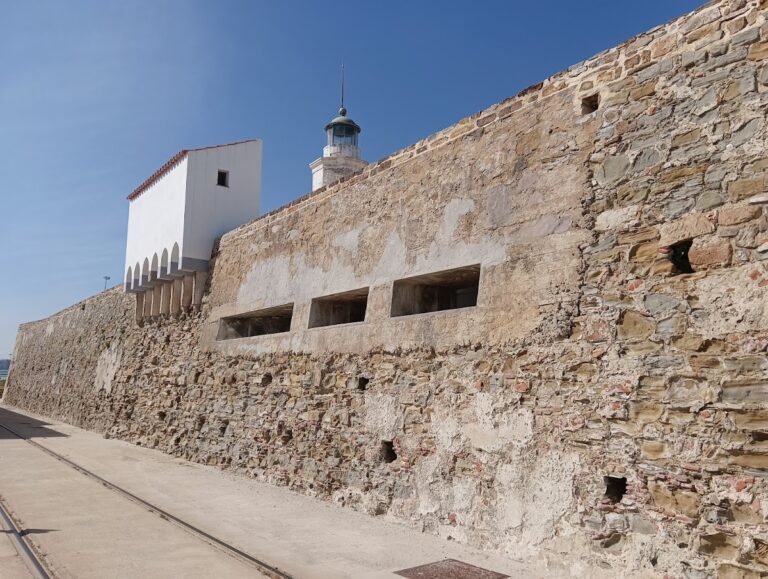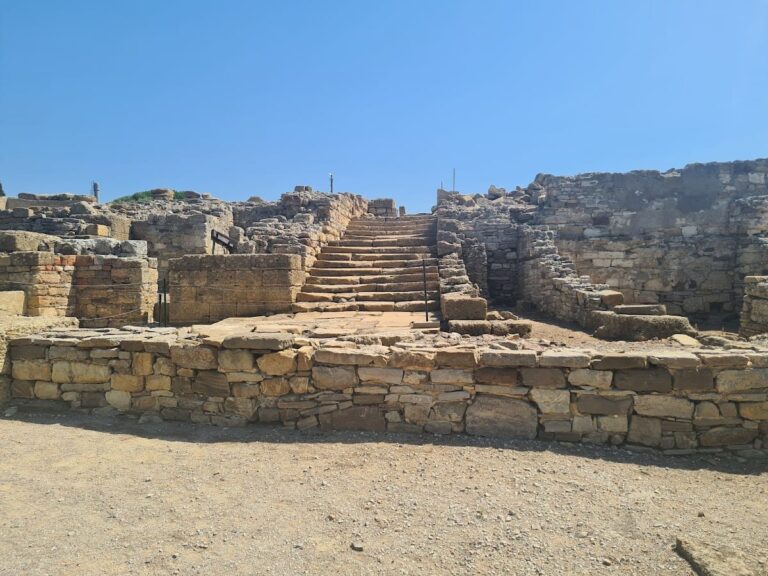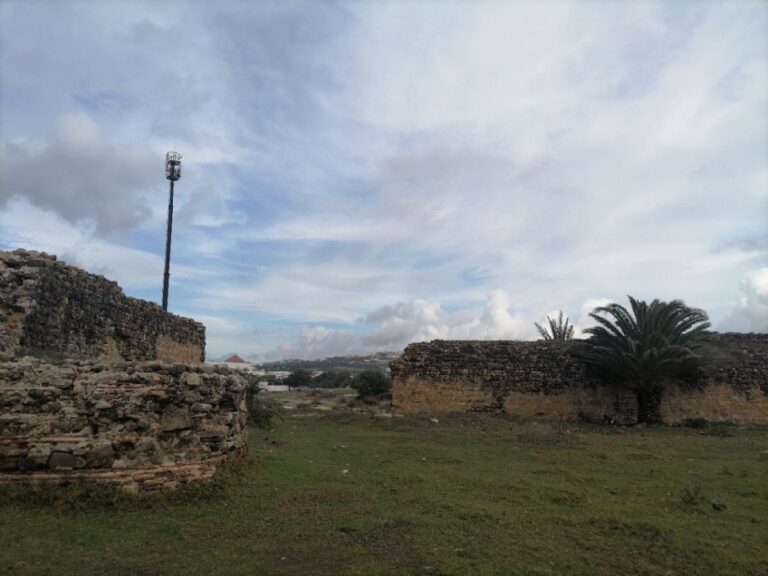Baelo Claudia: An Ancient Roman City in Tarifa, Spain
Visitor Information
Google Rating: 4.6
Popularity: High
Google Maps: View on Google Maps
Official Website: www.museosdeandalucia.es
Country: Spain
Civilization: Roman
Remains: City
History
Baelo Claudia is an ancient Roman city located in the municipality of Tarifa, Spain. It was established by the Romans at the end of the 2nd century BC on the northern shore of the Strait of Gibraltar, taking over from an earlier settlement of Bastulo-Punic origin.
Initially, Baelo Claudia grew as a fishing village and commercial port that maintained strong maritime connections with North Africa, especially with Tangier in the Roman province of Mauretania Tingitana. The town’s prosperity was deeply connected to its local economy focused on tuna fishing, the salting process, and the production of garum, a fermented fish sauce prized throughout the Roman Empire. In the 1st century AD, Baelo Claudia was granted municipium status by Emperor Claudius, recognizing its administrative and legal importance within the provincial framework.
Baelo Claudia reached its height between the late Republic and the early Empire, flourishing from the 1st century BC through the 2nd century AD. However, in the mid-2nd century, the city suffered severe damage caused by a powerful earthquake followed by a tsunami. This event greatly weakened its infrastructure and economy. In the 3rd century, Baelo Claudia faced further difficulties, including raids by Germanic tribes and Barbary pirates. Despite some recovery efforts later in that century, the city never regained its former prosperity.
By the 6th century, Baelo Claudia was abandoned. Over time, its name transformed through medieval periods into Bolonia, which remains the name of the locality today. Archaeological interest in the site began in the early 20th century, especially with the work of archaeologist Jorge Bonsor. In 1925, the site received official protection as a Property of Cultural Interest. Since 2007, a museum designed by Guillermo Vázquez Consuegra has been associated with the archaeological site. Ongoing research led by institutions such as the University of Cádiz continues to reveal important discoveries, including the only known copy of Polykleitos’ sculpture Doryphoros found in Hispania and the tomb of a rare noblewoman.
Remains
The layout of Baelo Claudia follows the typical Roman town plan with a rectangular grid of streets. Two main roads define its organization: the decumanus maximus, which runs east-west, and the cardo maximus, running north-south. Their intersection marks the location of the Forum, an open public square where civic activities were concentrated. The Forum retains its original 1st-century pavement slabs sourced from nearby Tarifa and is enclosed on three sides by covered walkways called porticos.
Surrounding the Forum are several significant public buildings. The basilica, measuring approximately 19.5 by 35.5 meters, functioned as a courthouse and featured a large statue of Emperor Trajan standing over three meters tall. Nearby were the curia, which housed the local senate, the municipal archive where official records were kept, and a temple dedicated to the imperial cult honoring the emperor. Additional religious structures include four temples: three devoted to the Capitoline Triad of Jupiter, Juno, and Minerva, arranged unusually in a triple layout that is seldom seen outside Baelo Claudia and the North African site of Sbeitla in Tunisia. An Iseum, a temple dedicated to the Egyptian goddess Isis, reflects the presence of the Isiac cult within the city.
One of the largest buildings is the theater, which could accommodate around 2,000 spectators. Performances featured exclusively male actors who wore masks to represent female roles, consistent with Roman theatrical conventions. The city’s defensive system consists of sturdy stone walls reinforced by over forty watchtowers. Three main gates punctuate the circuit: the west gate facing the ancient road to Gades (modern Cádiz), the east gate leading toward Carteia near San Roque, and the northern Asido Gate.
Commercial and industrial zones appear well preserved. Numerous tabernae, or small shops, line certain streets, and a macellum, or market building, includes fourteen shops arranged around a central courtyard where meat and other foodstuffs were sold. Public thermae (bathhouses) showcase the Roman hypocaust heating system that circulated hot air beneath floors and walls. Close to the shoreline, structures related to the production of garum have been identified, highlighting the importance of the local fishing industry.
Water was supplied to Baelo Claudia by four aqueducts, whose remains, along with sections of the sewer system and paved streets, provide insight into the city’s advanced infrastructure. This combination of urban elements offers one of the most complete illustrations of Roman city planning and engineering on the Iberian Peninsula. The archaeological complex also includes a modern visitors’ center with amenities and free admission for citizens of the European Economic Area.










